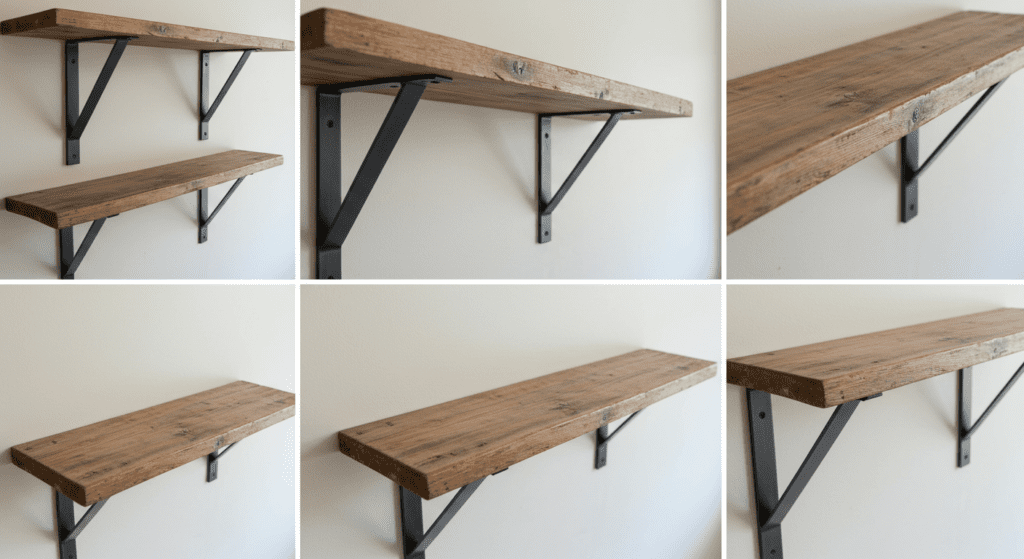Table of Contents
- Introduction
- Materials Needed
- Step-by-Step Guide to Building Floating Shelves
- Tips for a Professional Finish
- Conclusion
- FAQs
Introduction
Floating shelves are a stylish and functional addition to any home, offering extra storage without bulky brackets. Whether you prefer the rustic charm of reclaimed wood or the clean look of plywood with inexpensive brackets, this guide will walk you through the process of building your own custom shelving.

Materials Needed
- Reclaimed wood or plywood (1×8 or 1×10 recommended)
- Inexpensive brackets (for a floating effect)
- Wood glue
- Sandpaper (medium & fine grit)
- Stain or paint (optional)
- Level
- Stud finder
- Screws & wall anchors
- Drill
Step-by-Step Guide to Building Floating Shelves
1. Choose Your Wood
- Reclaimed wood: Sand thoroughly to remove splinters and old finishes.
- Plywood: Cut to desired length and sand edges for a smooth finish.
2. Prepare the Shelf Supports
- For a floating shelf effect, use hidden brackets or create a wooden French cleat system.
- If using inexpensive brackets, attach them securely to wall studs.
3. Assemble the Shelf
- For a solid wood shelf, glue and clamp multiple boards together for thickness.
- For plywood, reinforce edges with wood filler or edge banding.
4. Mount the Shelf
- Use a level to ensure the shelf is straight.
- Secure brackets into wall studs or use heavy-duty anchors for drywall.
Tips for a Professional Finish
- Sand thoroughly before staining or painting.
- Apply a sealant for durability, especially on reclaimed wood.
- Use matching screws for a seamless look.
Conclusion
Building floating shelves with reclaimed wood or inexpensive brackets is an affordable way to add storage and style to your home. With the right tools and techniques, you can achieve a custom shelving solution that fits your space perfectly.
FAQs
1. Can I use plywood for floating shelves?
Yes, plywood is a great budget-friendly option. Just ensure it’s sanded and finished properly.
2. How much weight can floating shelves hold?
It depends on the brackets and wall anchors used. For heavy items, mount into studs.
3. Do I need special tools to build floating shelves?
Basic tools like a drill, level, and saw are sufficient. A stud finder is helpful for secure mounting.
4. How do I hide shelf brackets?
Use hidden brackets or a French cleat system for a true floating look.
5. Can I stain reclaimed wood?
Yes, but sand it first to remove old finishes and ensure even absorption.